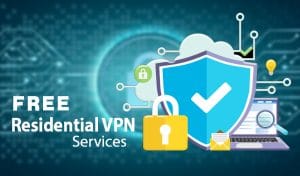Proxies can be useful tools for accessing blocked content, securing your web traffic, and maintaining your privacy online. While proxies are commonly set up on computers, you can also configure them on iPhone and iPad devices.
This complete guide will teach you everything you need to know about setting up and using proxy servers on your iOS devices.
What is a Proxy Server?
A proxy server acts as an intermediary between your device and the wider internet. When you connect through a proxy, all your web traffic is first routed through that server before reaching the final destination.
Proxies provide a few key benefits:
- Access Blocked Websites and Apps: Proxies can bypass geographic restrictions and censorship to unblock sites and services blocked in your country.
- Enhanced Privacy and Security: By hiding your real IP address, proxies make it harder for sites to track your activity and identity online.
- Faster Browsing: Proxy servers often cache commonly accessed content, allowing webpages to load faster.
Proxy servers come in a few main varieties:
- HTTP/HTTPS Proxies: The most common type, these proxies route web (HTTP/HTTPS) traffic only.
- SOCKS Proxies: Route all internet traffic, including web, email, messaging, and more.
- Residential Proxies: Assigned to real residential IP addresses to appear as normal consumer traffic.
- Datacenter Proxies: Hosted in data centers, less likely to be blocked, fast throughput.
The proxy server you use can be self-hosted or provided by a commercial proxy service. Paid proxy plans give you access to large proxy networks with numerous IP addresses to rotate through.
Why Set Up a Proxy on iPhone?
There are a few reasons you may want to configure a proxy server on your iPhone or iPad:
- Bypass Geographic Restrictions: Proxies let you access country-specific content, view blacked out sports games in your area, use sites blocked by your school/work.
- Stay Anonymous Online: Hide your iOS device’s real IP address and location to browse the web more privately.
- Enhanced Security: Adding a proxy creates an extra layer between your device and websites, helping keep malware and hackers at bay.
- Faster Speeds: Connecting via proxy often provides faster page load times, especially if using a dedicated paid proxy service.
How to Manually Configure an iOS Proxy
Manually setting up a proxy server on iPhone or iPad takes just a few quick steps:
- Open the Settings app then tap on Wi-Fi
- Next to the Wi-Fi network you’re connected to, tap the i button
- Scroll down and tap Configure Proxy
- Choose Manual
- Enter your proxy server Address and Port number
- If required, enable Authentication and enter your proxy username and password
- Tap Save in the top right corner
And that’s it! Your iOS device is now routing web traffic through the configured proxy server.
A Note About Automatic Configuration
If your network administrator or proxy provider has supplied an automatic proxy configuration file, you can choose the Automatic option instead.
However, most proxy users will need to enter the manual proxy details.
Testing Your iPhone Proxy Connection
After setting up the proxy server, it’s important to test that everything is working correctly:
- Open a browser like Safari and navigate to websites, check if your location/IP address has changed
- Visit IP testing sites like ShowMyIP to confirm your new proxy IP
- Access blocked sites/apps specific to other countries, see if restrictions are now bypassed
- Check connection speeds to confirm proxies are providing expected performance
If you run into any issues while testing, reconfirm your proxy settings or contact your network admin/proxy provider for troubleshooting help.
Using a Proxy for All iOS Traffic (SOCKS Proxies)
The manual proxy configuration method outlined above routes only web traffic through the proxy server.
If you want all internet traffic from your iPhone or iPad to connect via proxy, including emails, messaging apps, etc, you need to set up a SOCKS proxy.
Unfortunately, iOS does not natively support SOCKS proxy configuration. However, there are third-party SOCKS apps you can install to enable device-wide proxy connections:
- Shadowsocks: A popular free and open source SOCKS proxy client for iOS.
- Psiphon: Freemium SOCKS proxy app focusing on bypassing internet censorship.
- SurfEasy: Paid VPN and proxy service providing iOS SOCKS configuration.
These apps make the SOCKS proxy setup process quick and easy without any manual configuration required.
Using Proxies on Cellular Data
The manual proxy configuration method above applies only when connecting via Wi-Fi on your iPhone or iPad.
If you instead want to use a proxy when browsing on your iOS cellular data connection there are a couple of options:
-
Download a VPN app that includes proxy support like Surfshark, NordVPN, ExpressVPN, etc. Connecting via the VPN app will route all cell data through their proxy servers.
-
Use a SOCKS proxy app like Shadowsocks to proxy your cellular data in addition to Wi-Fi traffic.
-
Configure proxies at the router level if you want all devices on your home network to use proxies, including when on cellular data.
How to Disable an iPhone Proxy Server
If you no longer wish to use a proxy on your iPhone, disabling it is simple:
- Go back into your iPhone Settings, choose Wi-Fi and tap the i next to the connected network.
- Scroll down and tap on Configure Proxy.
- This time select Off instead of Manual.
- Tap Save to remove the iOS proxy configuration.
Your iPhone will now use your normal IP address instead of routing through a proxy server.
Why You May Want to Keep Using Proxies
While simple to disable, there are many benefits to keeping your proxies configured on iPhone and iPad such as:
- Maintain access to blocked apps, websites and streaming services from anywhere
- Keep your mobile browsing more secure and private
- Further hide your identity with regularly rotating IP addresses
- Never worry about internet censorship restrictions again
- Continue benefiting from faster page load speeds
Regularly changing your digital identity with proxies reduces traceability while unlocking restricted online content. Many proxy users keep servers running on all their devices for these ongoing advantages.
FAQs About iPhone Proxy Settings
Here are answers to some commonly asked questions about configuring proxy servers on iPhones:
What’s the difference between an iPhone VPN and proxy?
A VPN encrypts and tunnels all device traffic through remote servers for security and anonymity. A proxy routes only web traffic to hide your IP address and location.
Will a proxy drain my iPhone battery faster?
Proxies require slightly more processing power which can impact battery life. However, modern iPhones are very efficient and any battery drain from using reputable proxies is marginal.
Can I be tracked if using an iPhone proxy?
It‘s much harder to track proxy users as all traffic looks to be coming from the proxy server’s IP address instead of the actual device. However, individual proxies can still potentially log traffic, so check your provider‘s privacy policy.
Is it illegal to use an iPhone proxy?
Proxy usage is generally legal in most regions. However, some ways proxies are utilized may breach terms of service or local laws, like accessing unauthorized copyrighted streams. Examine your country’s cyber laws before deciding if proxies align with regulations.
Final Thoughts on iPhone Proxy Configuration
Learning how to set up proxy servers on your iPhone opens up many possibilities that are unavailable when browsing from your normal identifiable IP address and location.
While the iOS manual proxy configuration method covered here only routes web traffic through your server of choice, third party SOCKS apps allow for device-wide proxy connections.
Be sure to thoroughly test your newly configured iPhone proxy server and tweak settings if necessary. Proxies that go unmonitored can unexpectedly stop working over time.
With your web traffic now tunneling through an intermediary server before reaching intended destinations, you can enjoy enhanced privacy, bypass geographic blocks, and much more.








